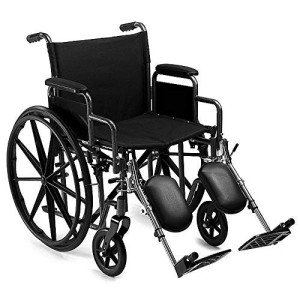Everything You Need To Be Aware Of Bariatric Wheelchair 24 Inch Seat

Bariatric Wheelchair Seat Width
Seat Width
Having the correct seat width is crucial to wheelchair users who spend longer durations in their chairs. Too narrow a seat will trigger pressure on the hips and thighs which might result in sores or pressure points. Having too broad a seat can likewise make it tough for the user to reach the hand rims to move themselves or maneuver in little areas.
To determine the correct seat width an individual would rest on a chair usually and have their measurement taken throughout their lap at the largest point which is normally their hips. self propelled bariatric wheelchair measuring tape can be utilized to determine this, however a yard stick is preferred as it avoids individuals from wrapping the tape around their hips which would give an incorrect outcome.
The standard wheelchair seat width is 16" (narrow grownup), 18" (standard grownup), and 20" (large grownup). For bariatric patients, a 24" seat is offered. This heavy-duty extra broad bariatric wheelchair from Medline features swing-away footrests, a carbon steel frame with rust- and chip-resistant chrome plating, and easy-to-clean vinyl upholstery. It has a weight capacity of 500 pounds.
Seat Depth
Typically, the seat depth of a bariatric wheelchair was added 2" to the measurement taken at the user's best point (typically their hips). This was indicated to accommodate additional layers of clothing that may be used throughout cold weather condition. However, this practice is ending up being less common as wheelchair users have the ability to invest more time indoors and are not using long coats. This makes the seat depth of a chair lesser when selecting a bariatric wheelchair. However, it is still essential to pick an alternative that offers sufficient support for bigger users.
The Medline folding additional large bariatric manual wheelchair includes a comfy 24" seat width and a sturdy slide tube silver vein frame. It also has an adjustable axle and tool-free raising legrests.
Seat Height
When it pertains to identifying the proper wheelchair seat width you should constantly measure from the user's best point which is generally their hips. You will also need to think about whether the user is going to be using a winter season coat as this might add 2" to the width required.
When a wheelchair remains in usage it must only be run on level surfaces with the wheel locks completely engaged. This is to prevent the chair from being able to move inclines that are 10 degrees or higher. It is likewise important to keep in mind that any activity that might shift the center of gravity in the chair should be made with care. This includes grabbing items that need the person to lean out of their seat or trying to stand up from it.
Whenever you have the chair in use it is suggested that you frequently check it for damage and lube any locations that are considered required. For example, the casters ought to be lubed by eliminating the caster fork and utilizing a multi-purpose grease to use to the caster stem bearings. Likewise, the foot plates can be adjusted by loosening the bolt and then moving them to the wanted position. This enables the feet to sit comfortably on the footplate and prevents any pressure points from forming. This can be extremely uneasy for the user and if left unattended, can cause press sores.
Weight Capacity
Bariatric wheelchairs are developed to support more weight than standard wheelchairs. This makes them tougher and better equipped to manage falls. They are likewise generally bigger and broader, making them less maneuverable in tight areas than standard wheelchairs. They require automobiles with unique ramps and lifts to pack them, along with chauffeurs who know how to best transport them from one area to the next.

When picking a wheelchair, consider its weight capacity as it will be the primary determining element in whether it will accommodate your traveler's requirements. The weight capacity of the chair is frequently listed as a static load, indicating that it shows the quantity of weight the chair can comfortably hold while stalling. However, some producers likewise list an active load that is based on a drop test and can replicate the impact of someone sitting down in the chair. This may be a more trusted measurement of the weight limit, depending on your needs.
If you prepare to perform activities that shift your center of mass in the seat (such as reaching for objects), be sure to have front casters pointed in a forward direction and wheel locks engaged so the chair will not tip over. Likewise, check that casters are lubed frequently to prevent excessive wear and abrasions. The lubrication treatment involves removing the fork, separating the caster from the wheel, and greasing the caster stem bearings with premium multi-purpose grease.
